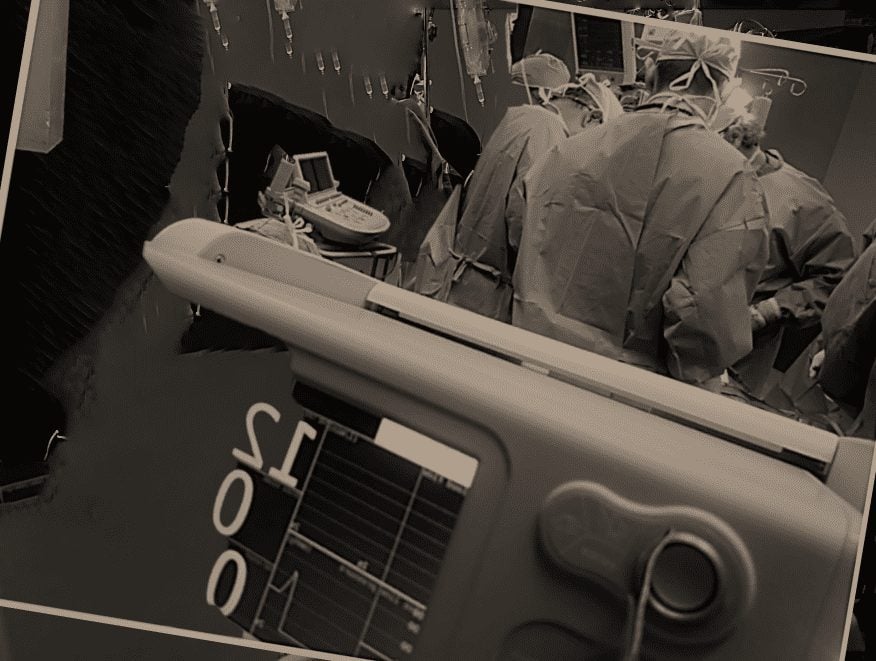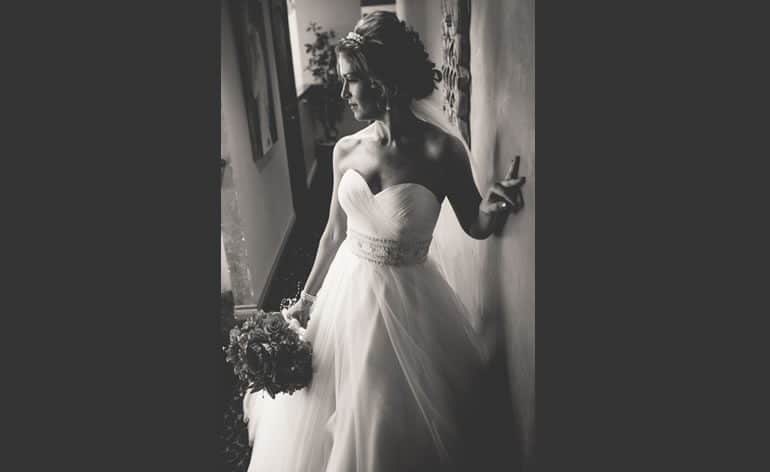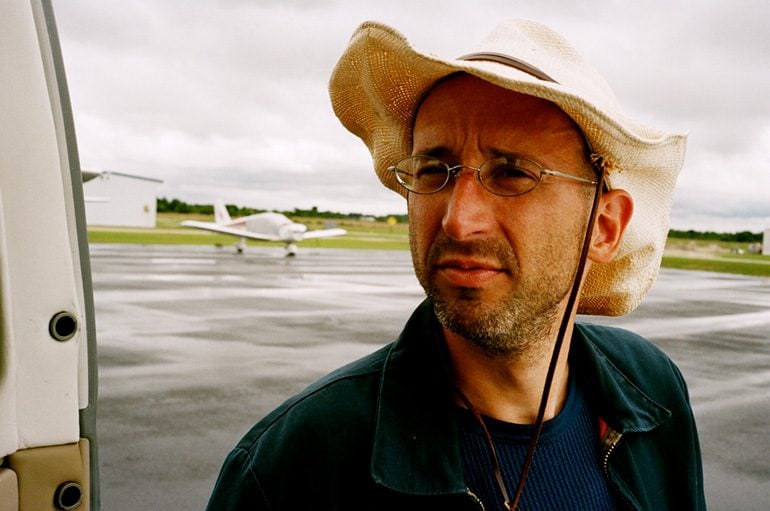“This entails a whole different set of camera movement issues.”
by George Avgerakis
Some day in your media production career, you may be called upon to film a real event in an operating room or emergency room. The requirements are very strict, the risks of liability are high, the pressure is intense, and the margin of error minimal.
I can safely say that with the possible exception of filming terrestrial or aerial combat, filming surgery is the most exciting media work you will ever do. While this article is by no means a complete review of the subject, and no one should enter a medical facility armed only with this information, the following guidelines may prove a helpful start in learning about this unique subcategory of our profession.
Why Film Surgery?
New pharmaceutical therapy, minimally invasive techniques like orthscopic surgery (using thin, video-enabled, manipulation devices to reach deep into the body without making large wounds), and non-invasive therapies are quickly replacing many of the surgical techniques that have dominated the practice of medicine for the last century.
The kinds of surgery that remain, and that will continue to flourish are the most difficult procedures that defy the march of technology. These include cardio thoracic, pediatric surgery, transplantations, complex cancer excisions, joint replacement, and of course, emergency trauma cases.
There is a great need to document surgery for the education of new physicians and the edification of the general public. Surgery filmmaking requires great patience, skill, risk avoidance and experience. Consequently, it is among the highest paid forms of media production.
Know the Players
Every surgical procedure has a cast of players and a script, similar to a play. The four key players are the surgeon, the assistant surgeon, the scrub nurse and the circulating nurse. Certainly there will be other people in the OR, such as the anesthesiologist and perhaps an assistant; specialists, such as a cardiac perfusion team that keeps the patient’s blood circulating during an open heart procedure; and, in the case of teaching hospitals, students.
Of all of these players, the scrub nurse is the most important, because it is this individual’s duty to make sure that sterility and the safety of the patient is maintained. A scrub nurse has the ultimate authority to eject a filmmaker from the theater, the most grievous offense being violation of the sterile field.
The wise filmmaker makes it a rule to get to know the scrub nurse as early as possible before filming, even days before, to learn the nurse’s specific techniques for preparation, surgical assistance and closure. The filmmaker should establish a set of common signals with both the scrub nurse and the surgical staff that can be relied upon under the most pressing circumstances. “Video off” is one that is most appreciated and may be ordered by any member of the medical team if the safety or privacy of the patient is questioned.
The Sterile Field
Avoidance of infection is the highest priority in surgery. Film equipment (including camera, lens, microphone, wires, media, etc.) and, in most cases, the filmmakers are considered septic and can never be allowed to touch the patient, the surgeons, the gurney or any instruments. Anything that comes into contact, directly or indirectly with the wound site must be sterilized. This area is called the “sterile field.”
Minor violations of the sterile field, such as the cameraperson touching the back of the surgeon, may not be a cause of alarm, but should be avoided. However, a serious field violation, such as touching the sheets that cover the patient or, worst of all, dropping equipment into the wound site, could compromise the survival of the patient. This could also cause you to be immediately ejected from the OR, bring an immediate end to the operation, and subject you and your company to severe liability.
For this reason, the experience of medical filmmakers is always examined under due diligence. High levels of production liability insurance are required with the hospital specifically named as insured. Special legal forms may also need to be executed by the producer, such as privacy assurances legislated by the Health Insurance Portability and Accountability Act of 1996 (HIPAA), law.
Scrubbing Up
Although you will not enter the sterile field, you will likely be required to wear scrubs and a surgical mask. These will be given to you by the hospital, and you will use either the nurse’s or surgeon’s locker room to change out of your street clothes and into sterile clothing.
If oxygen is to be in use in the OR, your film equipment will also be subject to a special screening for explosion-inducing electrical arcs. Most camcorders and audio equipment pass these tests easily, but lighting equipment presents problems. Most likely you will use the OR’s own (very bright) lights.
The camera and other equipment may also need to be “draped.” This is a simple procedure of covering everything but the lens and microphone capsule with sterile paper draping. Incidentally, if you discuss the matter with the surgeon beforehand, he may permit you to clip a lavaliere microphone to his surgical mask or collar, thereby providing you with a running commentary.
Filming in a “Stat Flight” helicopter, outfitted with ambulance equipment for emergency transportation of a patient. The object in the foreground is a control system for a balloon catheter, implanted in the patient’s aorta. The nurse stands by with a monitor on her lap, reading vital signs.
Know the Procedure
It is important to study both general surgical procedures and the specific operation to be done ahead of time to know what will be happening during most of the event. The best way to endear yourself with a surgical team is to demonstrate that you know the key players, the roles, the movements around the table and the most critical parts of the procedure.
One safety note for the cameraperson closest to the table: there is a device known as the cauterizer or “bovie” used by the surgeon to burn tissue in the sterile field. The bovie uses high voltage, triggered by a foot pedal under the surgical gurney. Usually, the surgeon will make sure his body is not in contact with anyone when he triggers the bovie, but if, during the burn, someone should be in contact with the surgeon, a serious shock could result. The same goes, of course, to defibrillator paddles, but in this case, everyone in the theater hears the command, “Clear!”
If you don’t know what is going to happen, the best way to stay out of trouble is to let the surgeon and scrub nurse know that you are a novice and to give you a safe place to stand. This place may change from time to time, but you will always be given advance notice by the scrub nurse.
Real Emergencies
The experienced surgical filmmaker eventually learns the pace and patter of a successful operating room team. The surgeon often selects a piece of soothing music to play. The team chats casually during the procedure, even joking at times. But every so often, the room becomes dead silent and only terse commands are heard. This is usually a subtle sign that something has gone wrong. It is a signal for the filmmaker to be on guard for sudden movements that may introduce additional dangers or risks. Of course, it is also the moment the filmmaker finds most fascinating.
I once filmed an eminent, heart surgeon who, nearly at the end of an open-heart procedure, happened to hear the anesthesiologist say just two words, “that’s funny,” before he immediately ordered the bypass needle back in his hand, jabbed it into the patient’s aorta and ordered the perfusion team to put the patient back on the heart bypass machine. The next order out of the surgeon’s mouth was, “Video off!” My camera pointed straight to the ceiling, my signal to the OR staff that I was not shooting.
Seconds later, the pulse alarms started beeping, the anesthesiologist realized he’d administered a wrong dosage and emergency procedures went into effect. The patient was saved by a surgeon who was alert to the most minute changes in his environment. He knew the business of the anesthesiologist better than the anesthesiologist and ordered the life-saving resumption of bypass in time to avoid death. He also knew enough to end videotaping in order to save his filmmaker the necessity of being party to a long and complicated legal procedure should the patient have suffered damage or died.
Being wide awake and obedient to the medical staff is an essential skill in medical filmmaking.
Life or Death Drama
Another unforgettable moment occurred in the honeycomb shaped operating theaters of the Texas Heart Institute as I filmed the eminent Dr. Denton Cooley, considered by many to be the world’s best surgeon. In most open heart operations, the heart itself is stopped (this is done by pouring a bucket full of sterile ice water into the open chest cavity). After the procedure, the ice water is sucked out, the heart warmed up, and the heart usually starts up of its own accord.
Dr. Cooley had been finishing a complex heart operation on an 80 year-old patient, when the patient’s heart simply failed to restart. The room quickly came to a silent hush as everyone became a bit more attentive to the surgeon’s technique. In my earphones, I could hear Dr. Cooley order the defibrillating paddles, then, because I was tight by his left side, filming, and might take a shock, he muttered to me, “Watch yourself, George.”
Then, for the rest of the room, he said, “Clear,” and gave the heart a mild electric shock. Nothing happened. He ordered an increase in the voltage, said, “Clear,” again, and gave another shock. Nothing. I could feel a change in the staff’s mood, a mood I’d come in 300 or so hours of filming with this group, that meant they were accepting a rare failure, an inevitable death.
Then Dr. Cooley took the heart in both his hands and began to palpate it, squeezing blood from chamber to chamber like a child would test the integrity of a bright red water balloon. Then, taking a deep breath, he placed one of the paddles deep behind the heart and the other on the front. Requesting yet more voltage, he repeated the clear order and gave one more jolt.
In a few seconds the heart shivered, then heaved a single pulse, then another. Shortly after, it began a regular, strong rhythm. Dr. Cooley looked at me over his shoulder, “Did you get that?” he asked.
I answered.
“That fellow really wanted to live,” he muttered. “Close him up,” he said to his assistants.
Then he raised his hands and let the nurses remove his gown. Backing away from the table to the double doors that lead to another operating room, he was already on his way to the next operation.
It’s mornings like that which make surgical filmmaking better than flying in a fighter jet.
George Avgerakis is VP Creative Director of Avekta Productions in New York. He has filmed surgery at the Texas Heart Institute, the Cleveland Clinic, Columbia University Medical Center, Louisiana Eye Center and many other eminent surgical environments.
Featured in StudentFilmmakers Magazine, July 2009 Edition.
Sign Up for your own subscription to StudentFilmmakers Magazine.
- Click here to sign up for the Print Subscription.
- Click here to sign up for the Digital Subscription.
- Click here to sign up for the Bulk Subscription for Your School or Business.





